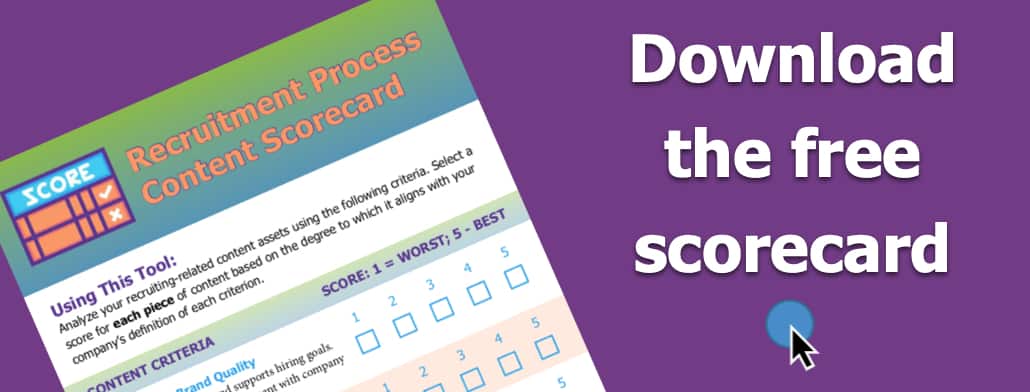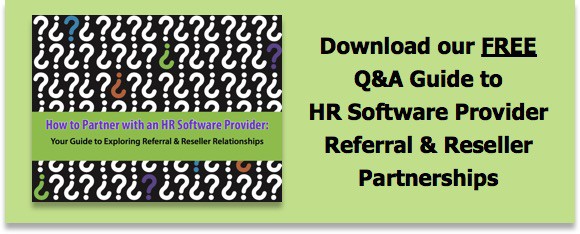What Are The Pros And Cons of A PEO?
The following post is provided courtesy of Human Capital Concepts (HCC), a Certified Professional Employment Organization that partners with employers to manage employee-related responsibilities and risks. HCC provides worry-free HR, benefits, payroll, and compliance solutions all in one place, with personal attention from a dedicated team of experts.
When you dreamed about growing your business, you probably didn’t imagine that you’d need to become an expert in labor regulations, health care mandates, and safety guidelines, along with HR administration, payroll, benefits and compliance. The fact is small businesses spend 17 percent of total manpower on non-core business tasks. Most of these tasks revolve around employee management. A PEO may be able take many of these challenges off your hands.
A PEO is a “Professional Employer Organization.” A PEO will handle all of your company’s HR responsibilities and tasks. Partnering with a PEO will do more for your business than freeing resources for your core business activities. PEO clients consistently provide a better employee experience. Businesses that partner with a PEO experienced twice the revenue growth of their non-PEO competitors. PEO clients are also 50 percent less likely to permanently close.
Before you decide if a PEO is right for your company, you should consider all your options for HR support.
PEO Pros and Cons
When considering teaming up with a third party for your HR needs, you have several options. These options each have pros and cons. A PEO vs a payroll broker or HR administrator, such as an HRO or ASO, may look similar on the surface. They are, in fact, very different.
HRO stands for “Human Resources Outsourcing.” As the name suggests, an HRO allows you to outsource some or all of your HR tasks. The HRO will offer a la carte services. The downside of an HRO is that you are still responsible for decisions surrounding the minutiae of your human resources administration. You’ll still need at least one expert on staff who can make these decisions. Another disadvantage is that your company won’t enjoy lower benefits costs when you partner with an HRO.
An ASO is a cross between an HRO and PEO. ASO stands for “Administrative Services Organization.” Unlike an HRO, an ASO will administer all of your HR tasks. But unlike a PEO, an ASO does not provide workers’ compensation or liability coverage. Also, partnering with an ASO will not help your company save money on benefits coverage.
Partnering with a professional employer organization, or PEO, offers more pros than cons. The advantages of using a PEO range from tax reporting to benefits procurement. The PEO will administer all of your HR needs. A PEO will withhold employees’ taxes and employment tax liabilities. A PEO will also take care of the yearly tax reporting. Your company will benefit from partnering with a PEO to handle many of the aspects associated with having employees.
Higher health insurance costs are a downside of being a small business. Companies that partner with a PEO can leverage the PEO’s size when purchasing health insurance and other group benefits. The PEO will also carry workers’ compensation and liability insurance.
PEO Benefits
Partnering with a PEO provides many benefits for business owners, startup founders, nonprofit executives, and others. For starters, you’ll be able to focus on your core business activities. You strive to be the best in your industry, and growth is exciting. But with growth comes more employees and a larger HR burden. HR compliance, workers’ compensation laws, and employer liability issues are complex and divert resources from your company’s main focus.
A PEO will provide expert support as your HR partner. Human Resources expertise is crucial to the success of your business. Errors from your HR department can potentially cost your company thousands. Hiring the wrong HR personnel can increase your risks of fines, workers’ compensation claims, and lawsuits. In fact, a PEO with recruiting expertise can protect your organization from hiring the wrong people.
You’ll enjoy cost savings when you partner with a PEO. A study conducted by noted economists Laurie Bassi and Dan McMurrer of McBassi and Associates on behalf of the National Association of Professional Employer Organizations (NAPEO) found that businesses enjoy a cost savings of 27.2 percent when they partner with a PEO. According to the study, the average cost savings from using a PEO is $1,775 per year per employee, which also reinforced the findings of earlier research, again showing notably lower employee turnover, higher rates of both employee and revenue growth, and enhanced employee benefit offerings.
Partnering with a PEO will help you get lower rates for group insurance. Your PEO benefits specialist will leverage the PEO’s larger size, meaning you get better rates for your company. Small businesses that partner with a PEO save up to 40 percent on their health insurance premiums, according to the National Association of Professional Employer Organizations (NAPEO).
You may find the advantages far outweigh the disadvantages of using a PEO. According to the NAPEO, businesses that used a PEO grew 7-9 percent faster. They experienced lower employee turnover rates and were 50 percent less likely to go out of business.
PEO Group Insurance
When the Affordable Care Act rolled out in 2010, employers saw a 40 percent increase in insurance premiums. Over the next ten years, healthcare premiums increased another 54 percent, according to the Kaiser Family Foundation. In 2020, average health coverage for a family costs $21,342.
The Affordable Care Act also gave employees insight into the high cost of healthcare. The pandemic drove this point further in employees’ minds. As a result, good benefits are more important than ever for employee retention. More than three-quarters of employees say that benefits are an important part of their overall compensation. Half of employees say they’d consider taking a new job for better benefits.
As a small to medium-sized business, your insurance costs are higher than what large corporations pay. In the past, you may have been forced to provide your employees with less-than-stellar benefits. But partnering with a PEO can lower your costs and provide better options. This is because the PEO negotiates with insurance companies for coverage for all of their clients. You get to pay rates similar to the big corporations when you have PEO group insurance.
The Affordable Care Act did more than raise premiums. Increasingly complicated regulations also increase your administrative costs for health care benefits. An in-house HR team must spend more time ensuring your company remains in compliance. Additionally, an in-house HR team often becomes a sort of middleman between the insurance provider and the employees. When issues arise, your HR staff redirects their time contacting the insurer or deciphering the policy.
PEO Payroll
Payroll administration demands hours that could be spent growing your business. The tasks start with getting withholding information from your employees. From there, you need to track hours and calculate withholdings. You must also track direct deposit information for your employees.
Like any other payroll administrator, a PEO can do all these tasks for you. But there are advantages to partnering with a PEO vs a payroll broker. Your PEO becomes your co-employer. The PEO’s EIN number will appear on all employee tax forms. This allows the PEO to handle tax withholdings and reporting. When tax time comes around, your PEO, not you, will file the litany of related employment tax forms.
But be careful about the downside of PEO tax implications. If you choose a PEO that is not certified by the IRS, otherwise known as a CPEO, you’re on the hook for unpaid taxes. Not every PEO completes the stringent qualifications to become an IRS-certified CPEO. Those that do, however, take on 100 percent of the liability for unpaid employment taxes for your company. Choosing a CPEO is the only way to be confident the money you earmark for taxes makes its way to the IRS.
Another of the pros of a PEO is that you don’t need to employ a Human Resources professional to handle HR administration, benefits and workers’ compensation issues. The average salary for a full-time human resources manager is $68,399, plus an additional 40 percent, or $27,336, for recruitment, benefits, and taxes. The Society for Human Resources Management says businesses need 2-3 HR team members per 100 employees to deliver essential HR services.
Professional Employer Organization Tax Reporting
Partnering with a PEO has important and beneficial tax implications for your company. A PEO will become your “co-employer.” Under this arrangement, the PEO is able to withhold employee federal and state taxes. The PEO then pays the government the withholdings.
A PEO will handle all of your other time-consuming payroll tasks, such as tracking employee wages and other payroll expenses. Your PEO will handle direct deposits and employee classifications. PEOs also take care of all employee documentation and compliance reporting, including new hire paperwork.
But what if your PEO fails to forward employment taxes to the IRS? Some unfortunate companies discovered a significant disadvantage of using a PEO when their provider failed to pay the IRS. Even though you’re entering into a “co-employer” agreement with the PEO, in the eyes of the IRS, you are still the primary employer liable for employment taxes.
That’s why you need an IRS Certified Professional Employer Organization when it comes to tax reporting. A CPEO is certified by the IRS. A CPEO undergoes financial audits, background reports, among other qualifications. Most importantly, once a PEO becomes certified as a CPEO, they assume liability for employment taxes. In the eyes of the IRS, the CPEO is on the hook if it fails to pay your employment taxes.
The PEO will also help handle many of the administrative tasks associated with workers’ compensation.
PEO Cost
Before you decide to purchase PEO services, you should understand how much money and time you’re spending on in-house employee administration. The Small Business Administration says the cost of an employee is up to 1.4 times his salary when you include recruitment, benefits, and taxes.
The time you and your team spend on payroll and HR-related tasks is a little tougher to pin down. A survey by the National Retail Federation found that 69 percent of small business owners feel “overwhelmed by regulations, rules and mandates such as labor regulations, health care mandates, tax codes and safety guidelines.”
The PEO will relieve you of the administrative burden of HR-related tasks. A PEO will also have the expertise to navigate the regulations, mandates, tax codes, and safety guidelines that, frankly, take too long for any layperson to unravel. Your PEO employs a team of HR experts who can navigate the complexities of the Affordable Care Act. They’ll also field questions from your employees. Your PEO will also stay on top of the ever-changing regulations.
Remember, PEO clients average a 27.2 percent return on their investment. A PEO can likely negotiate better rates for all of your employee benefits. Companies that use a PEO experience lower turnover and higher growth. But a PEO may also shield you from unexpected trouble.
The NAPEO recently compared the pandemic’s impact on PEO clients with other small businesses. Its findings suggest that PEO clients were better insulated from the catastrophic impact of the pandemic. PEO clients were twice as likely to have received Paycheck Protection Program loans. Most importantly, PEO clients were 91 percent less likely to still be temporarily closed and 60 percent less likely to have permanently closed.
Conclusion
The reality of employee management may cast a shadow on your dreams when you’re a business owner. But an HR partner can tackle the tedious, yet necessary, administrative tasks that are bogging you down. Once you have a trusted ally who can navigate the burdens of HR administration, you can go back to focusing on your core business activities.




